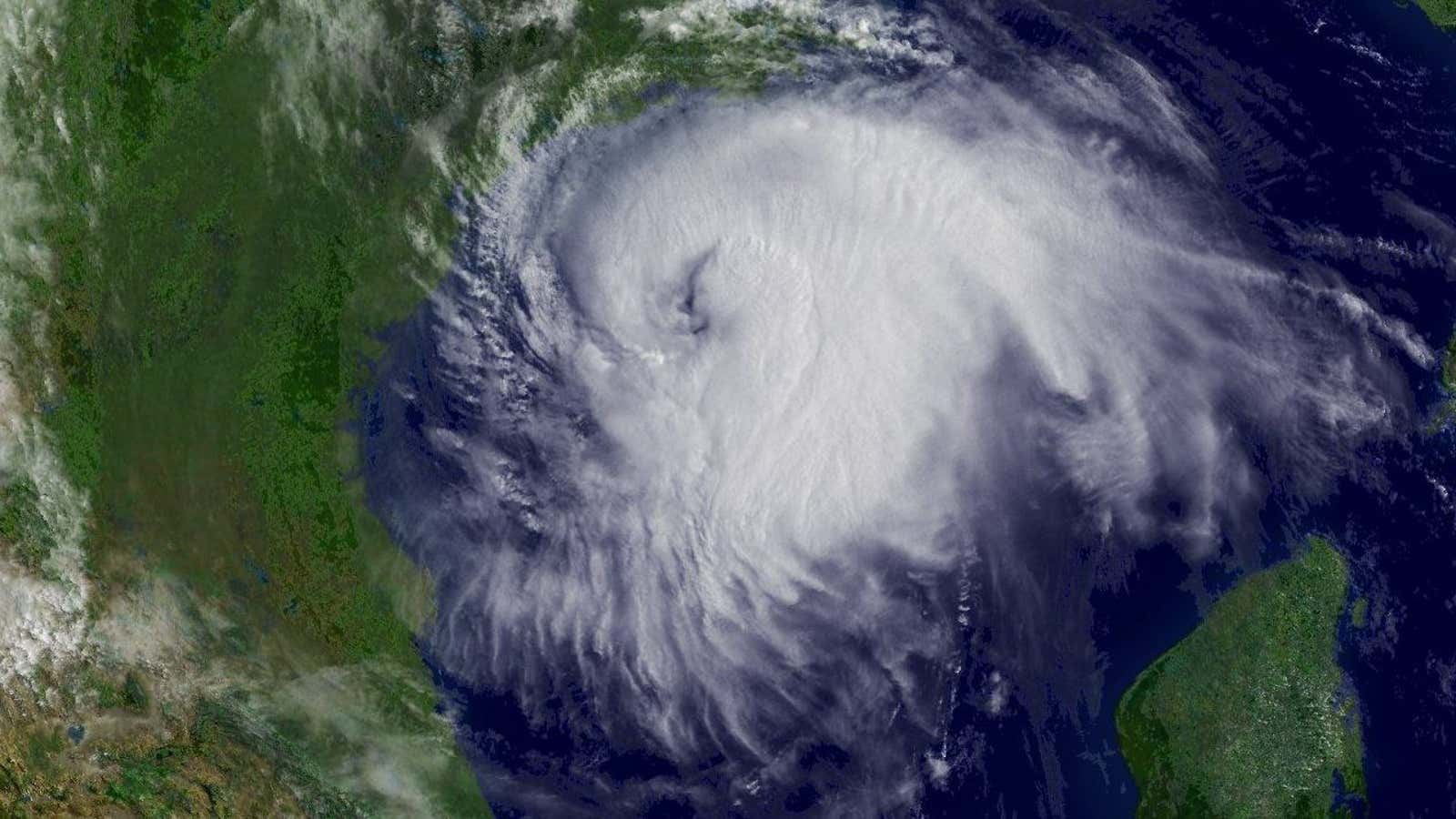Hurricane Florence, which is quickly approaching the Carolinas in the US, is a big one.
It’s about the size of Colorado. At the time of writing, it’s a category 4, with winds reaching 130 mph (209 kmph). Its predicted windspeed, rainfall, and the rise in ocean water along the coast make it a triple-threat to the land it approaches (paywall). If it hits land while maintaining its strength, it will be the strongest Caribbean hurricane to ever hit that far north. Already, 1.5 million people have evacuated their homes in anticipation of the storm’s arrival later this week.
A year ago, storms like Harvey and Irma devastated southeastern parts of the US. Hurricane Maria killed nearly 3,000 people living in Puerto Rico. There were more hurricanes than normal for the US in 2017, and this year could exceed the annual average as well. Could storms like Florence be the result of climate change?
Simply put, no. “Every hurricane is a weather event,” says Bob Henson, a Colorado-based meteorologist who writes for the blog Weather Underground. “Climate change doesn’t cause an event.”
But climate change—particularly warming ocean waters—can affect the intensity of hurricanes in general.
Hurricanes happen every year when the water near the tropics is at its warmest, usually between the beginning of June and the end of November. These massive storms bring the warm ocean waters from near the equator to the poles; without them, the waters at the equator would simply get warmer and warmer each passing summer, Henson explained.
Storms form when water above 80°F (about 27°C) causes the air above to heat up. Warmer air rises, and as it cools, forms a dense thundercloud above. The cycle of quickly heating and rising air creates low pressure that generates wind as it sucks in surrounding cooler air. As long as there’s warm water heating the air near the ocean, the cycle continues, and the storms gains speed as they move from east to west in the northern hemisphere.
This is where climate change comes in. If a hurricane travels north into cooler waters, or if it churns up cooler waters from deeper in the ocean, it can lose strength. But Florence has been feasting on unusually warm waters and will continue to do so, Marshall Shepherd, an atmospheric scientist at the University of Georgia, told the Verge. Although it’s impossible to say specific temperatures are the result of climate change, in general ocean temperatures have been slowly creeping upward as a result of global warming over the last century.
Unusually warm waters also led to Hurricane Harvey’s devastating strength (paywall) last year, a recently published study found. And they could be behind tropical storm Olivia that’s encroaching on Hawaii, Henson says. Only three tropical storms and three hurricanes have made landfall in Hawaii since 1840; Olivia would be the fourth.
By warming ocean waters in more places, climate change is slowly expanding the regions that experience hurricanes, and lengthening the duration of the season, Henson explained. It also makes it easier for some storms to sustain their strength.
Climate change is like a dial that can be turned up or down to increase its influence on hurricanes. At this point, it appears that human activity has been turning the dial up. We’ll likely see more intense storms in the years to come as a result.
Update: In addition to being the largest Caribbean hurricane to hit as far north as the Carolinas, Florence will be the largest hurricane of any origin to make landfall that far north.
